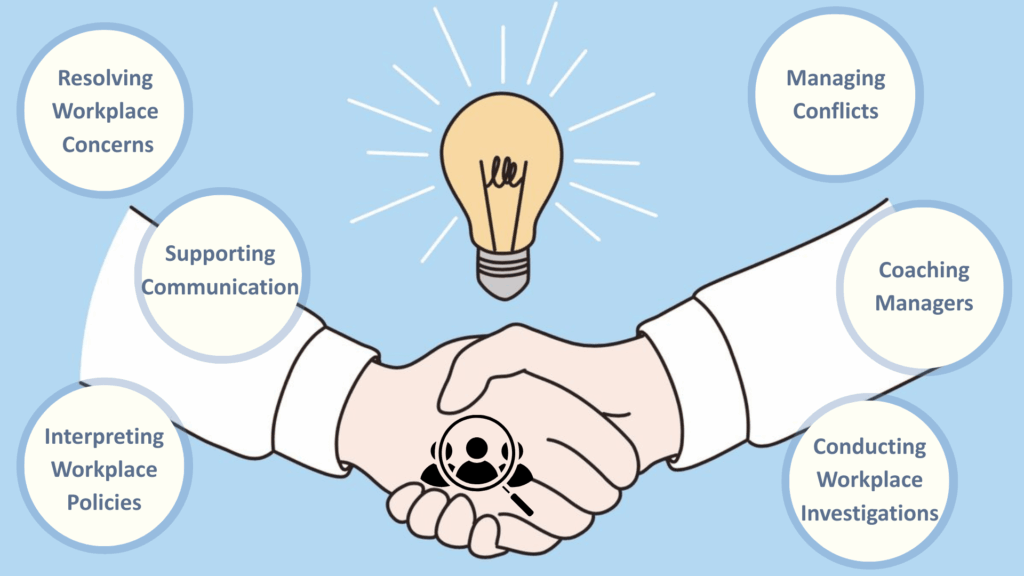What is a Job Shadow?
A job shadow is a structured professional observation in which an individual spends time following and observing a professional during their workday.
This allows the observer to gain insight into daily responsibilities, workplace culture, and the practical requirements of a specific job.
Job shadowing differs from employment or internships because it focuses on observation rather than direct participation.
Unlike internships or employment, job shadowing is short-term and typically unpaid.
It’s meant for exposure, not productivity.
Participants often observe for a few hours or a full day, though some programs last several days or even weeks.
This experience helps individuals grasp what a particular role truly requires its pace, responsibilities, and work environment before they invest in that career path.
How Can Job Shadowing Help You?

Job shadowing offers more than just a brief visit.
It provides context, perspective, and clarity: three elements that can change career planning.
Watching professionals at work exposes participants to job expectations, required skills, and the culture of a workplace.
For students, it can validate a chosen major or help narrow down options. For working adults, it serves as a low-risk way to explore new industries before making a career shift.
Benefits of Job Shadowing
The advantages extend across both professional and personal development:
-
Build your network: Create professional connections with people in your desired field.
-
Networking opportunities: Meet industry experts who can later guide or refer you.
-
Career clarification: Observe a typical workday to assess whether the job aligns with your interests.
-
Demonstrates skills: Displays professionalism, curiosity, and initiative to potential employers.
-
Fostering a learning culture: Encourages continuous growth and openness to feedback.
-
Improved job knowledge: Reveals the day-to-day tools, systems, and communication styles used in a role.
-
Trying out career options: Lets you experience different paths before committing long-term.
-
Bridge skill gaps: Identifies which abilities or technical skills to strengthen.
-
Confidence building: Reduces uncertainty by showing what to expect in real work settings.
-
Better decision-making: Supports long-term planning with practical insight and clarity.
How Does Job Shadowing Work?
The process begins with identifying a professional or organization to shadow.
Once contact is made, both sides agree on the schedule, goals, and expectations.
Participants may shadow for a single day or for a few sessions over several weeks.
During the experience, they observe meetings, watch how tasks are managed, and sometimes assist with light administrative duties.
Many hosts allow participants to ask questions about their career journey, responsibilities, and required skills.
Organizations may request confidentiality agreements or brief paperwork to ensure privacy and compliance.
Job shadowing can be conducted in person or virtually through video sessions, where observation and discussion still take place.
This arrangement benefits both sides: learners gain firsthand exposure, while employers identify motivated individuals genuinely interested in their field.
Job Shadow vs Internship vs Externship
Though all three experiences promote career learning, they differ in duration, depth, and purpose.
| Aspect | Job Shadow | Internship | Externship |
|---|---|---|---|
| Purpose | Observe a professional’s daily work | Gain hands-on experience | Observe and assist under guidance |
| Duration | Hours to a few days | Weeks to several months | Days to a few weeks |
| Compensation | Typically unpaid | Usually paid or credited | Usually unpaid |
| Involvement | Observation only | Active participation | Partial assistance or observation |
| Outcome | Insight and awareness | Work experience and skill growth | Exposure and career context |
When and Where To Do Job Shadowing?
Job shadowing can be done at almost any career stage. High school students use it to explore potential fields, college students use it to refine academic focus, and professionals use it to evaluate a new path.
It’s common across multiple industries, such as:
- Healthcare and nursing
- Technology and IT services
- Business and finance
- Education
- Engineering and skilled trades
- Marketing and creative services
Some schools and universities organize job shadow programs, but individuals can also arrange them independently through professional connections or online networks.
How To Get a Job Shadowing Opportunity?
Finding a shadowing opportunity requires initiative and clear communication. Many professionals welcome observers if approached respectfully.
When sending a request, include a brief introduction, your reason for interest, and your availability. Polite, concise, and well-written communication makes a strong impression.
Start by reaching out to:
-
Career services offices or academic advisors
-
Alumni networks and professional associations
-
Company HR departments or managers
-
Friends, mentors, or family contacts in relevant industries
10 Tips for a Successful Job Shadowing Experience
Success in job shadowing depends on preparation, professionalism, and engagement. The following strategies ensure that the experience is both productive and respectful.
-
Choose the Right Professional to Shadow: Identify someone with experience in the role you wish to learn about and who is open to mentorship.
-
Confirm Details in Advance: Clarify start time, duration, location, dress code, and any forms required. Preparing early prevents confusion.
-
Arrive Early and Prepared: Arriving 20 to 30 minutes ahead of schedule demonstrates punctuality and enthusiasm.
-
Research Before the Experience: Learn about the organization, its services, and the host’s background. This helps you ask relevant questions and understand discussions.
-
Be Observant and Take Notes: Observe workflows, communication styles, and workplace culture. Use pen and paper instead of a phone for note-taking.
-
Limit Distractions: Keep devices silent and out of sight. Avoid texting, filming, or taking pictures unless permitted.
-
Maintain Professionalism and Respect: Dress appropriately, follow instructions, and engage courteously with everyone you meet.
-
Be Authentic: Stay genuine and curious. Avoid pretending to know more than you do—authentic interest leaves a lasting impression.
-
Network Effectively: Engage with other employees, ask about their roles, and collect contact information for future follow-ups.
-
Follow Up with Gratitude: Afterward, send a thank-you message or card expressing appreciation. Mention one or two insights you gained to make it personal and memorable.
Credit: Tips adapted from insights shared by Dr. Ryan Corte, Optometrist, who emphasizes preparation, professionalism, and appreciation in job shadowing.
Can Job Shadowing Lead to a Job?
While job shadowing itself is not designed as a recruitment program, it can lead to opportunities over time.
Observing professionals allows participants to demonstrate interest, reliability, and initiative, qualities that employers remember.
Many organizations consider strong shadowing participants for internships or future entry-level roles.
Even when no direct offer follows, the relationships formed often open doors later through recommendations or referrals.
How To Add Job Shadowing to a Resume?
Job shadowing highlights initiative and curiosity, both valuable traits for employers.
It can be listed under “Job Shadowing Experience” or “Work Experience,” depending on its scope.
This concise format shows what was learned while emphasizing professionalism and practical exposure.
Example format:
Job Shadowing – Marketing Analyst
Brightline Agency | July 2025
- Observed digital campaign planning and client meetings
- Reviewed content analytics and performance tracking
- Gained insight into workflow and collaboration methods
Conclusion
Job shadowing is more than just watching professionals work.
It’s a strategic approach to understanding career paths, building connections, and making informed decisions about your future.
By spending time with professionals in real work settings, you gain practical knowledge that textbooks and online research can’t offer.
Remember, your career path is a personal journey. Job shadowing helps you gather information, ask questions, and understand the realities of different roles.
It’s a powerful tool for learning, networking, and finding where your skills and interests truly align.
Take the first step.
Reach out to professionals, be curious, and stay open to new possibilities.
Your future self will thank you for the effort and insights gained through job shadowing.
Frequently Asked Questions
Is Job Shadowing Paid?
Usually unpaid, as it focuses on observing work rather than completing tasks. Some programs may offer stipends, credit, or travel reimbursement, depending on the organization.
What Should Someone Expect During the Experience?
Expect to observe daily tasks, meetings, and communication while asking questions, taking notes, and learning about workplace culture and responsibilities.
What Are the Three Types of Job Shadowing?
The three main types are observation, regular briefings with professionals, and hands-on participation in supervised activities.










